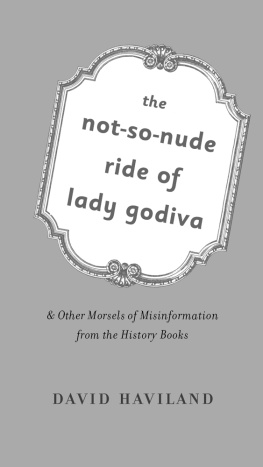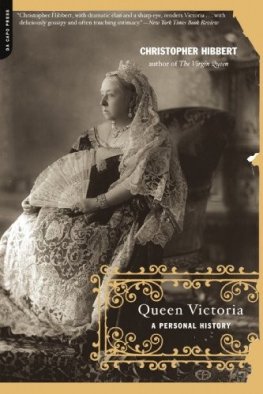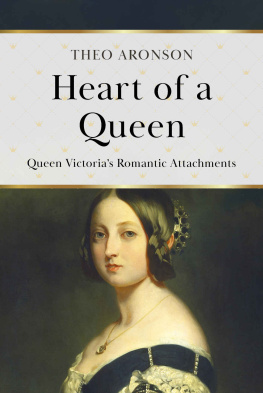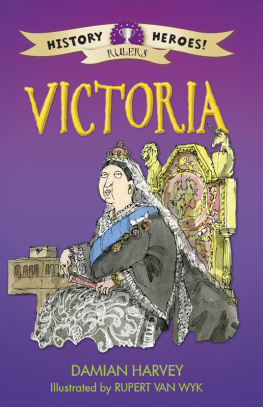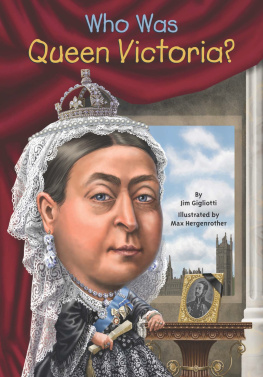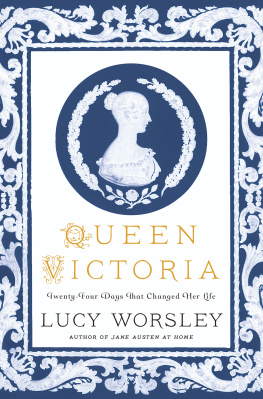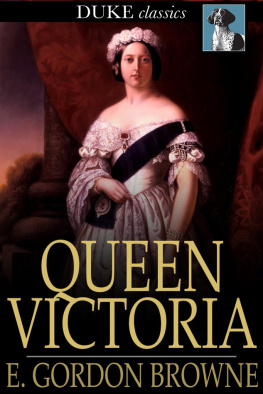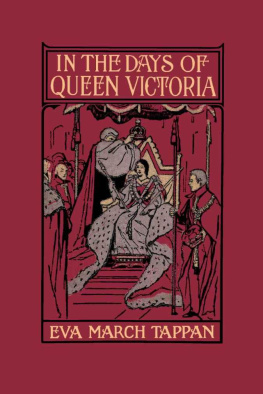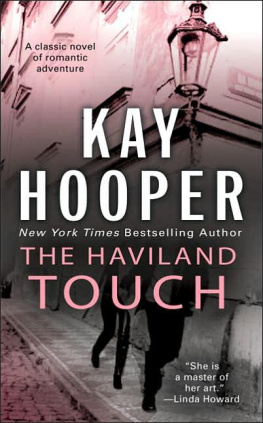Haviland - Why Was Queen Victoria Such a Prude? ...and other historical myths and follies
Here you can read online Haviland - Why Was Queen Victoria Such a Prude? ...and other historical myths and follies full text of the book (entire story) in english for free. Download pdf and epub, get meaning, cover and reviews about this ebook. year: 2012, publisher: Thistle Publishing, genre: Non-fiction. Description of the work, (preface) as well as reviews are available. Best literature library LitArk.com created for fans of good reading and offers a wide selection of genres:
Romance novel
Science fiction
Adventure
Detective
Science
History
Home and family
Prose
Art
Politics
Computer
Non-fiction
Religion
Business
Children
Humor
Choose a favorite category and find really read worthwhile books. Enjoy immersion in the world of imagination, feel the emotions of the characters or learn something new for yourself, make an fascinating discovery.

- Book:Why Was Queen Victoria Such a Prude? ...and other historical myths and follies
- Author:
- Publisher:Thistle Publishing
- Genre:
- Year:2012
- Rating:4 / 5
- Favourites:Add to favourites
- Your mark:
- 80
- 1
- 2
- 3
- 4
- 5
Why Was Queen Victoria Such a Prude? ...and other historical myths and follies: summary, description and annotation
We offer to read an annotation, description, summary or preface (depends on what the author of the book "Why Was Queen Victoria Such a Prude? ...and other historical myths and follies" wrote himself). If you haven't found the necessary information about the book — write in the comments, we will try to find it.
Haviland: author's other books
Who wrote Why Was Queen Victoria Such a Prude? ...and other historical myths and follies? Find out the surname, the name of the author of the book and a list of all author's works by series.
Why Was Queen Victoria Such a Prude? ...and other historical myths and follies — read online for free the complete book (whole text) full work
Below is the text of the book, divided by pages. System saving the place of the last page read, allows you to conveniently read the book "Why Was Queen Victoria Such a Prude? ...and other historical myths and follies" online for free, without having to search again every time where you left off. Put a bookmark, and you can go to the page where you finished reading at any time.
Font size:
Interval:
Bookmark:
Why Was Queen Victoria Such A Prude?
and other historical myths and follies
David Haviland
Copyright 2012, David Haviland
Chapter 1
Bygone Blunders
Chapter 2
Historical Myths
Chapter 3
Saucy Sagas
Chapter 4
Cruel Chronicles
Chapter 5
Notable Nomenclature
Chapter 6
The Body Politic
Chapter 7
Spiritual Stumbles
Chapter 8
Extraordinary Episodes
Chapter 9
Public Images
Chapter 10
Mental Ages
What was the most disastrous kidnapping in history?
The answer to this question is surely the kidnapping of Spartas Queen Helen by the Trojan prince Paris, which led to the disastrous Trojan War. Until very recently, the stories of Troy in Greek literature had been thought to have been purely mythical, until archaeological evidence appeared in the late 20th century which seemed to confirm that Troy had indeed existed, and had been a major strategic city of the time, which had undergone a number of lengthy conflicts some time around the 12th or 13th century BC. Based on this evidence, it seems likely that the stories told in the classical Greek literature, particularly Homers Odyssey and The Iliad, were based to some extent on genuine historical events, although these seem to have been combined with existing myths and legends.
According to these sources, the Trojan War was sparked by the kidnapping of Helen by Paris, prince of Troy. Helen was the wife of Meneleus, King of Sparta, and she was renowned as being the most beautiful woman in the world, famously described by Goethe many centuries later as the face that launched a thousand ships. The abduction of Helen led to a ten-year military campaign, in which the Greek forces led by Agamemnon took control of Troys allies and neighbours, and laid siege to the walled city of Troy itself. However, Troy seemed to be impenetrable.
In the tenth year, Troy at last fell, thanks to a brilliant scheme devised by Odysseus, which has come to be known as the Trojan Horse. The plan went as follows. First, the Greek forces burned down their camp and left, leaving behind an enormous horse made of wood. Attached to this horse was a note, which explained that the horse was a ceremonial gift to the Trojans, in recognition of their victory. Clearly, it seemed, the Greeks had admitted defeat, and sailed home. The Trojans opened the gates of the city, dragged the enormous horse inside, and began a night of boozy celebrations.
Later that same night, once all the Trojans were drunk or asleep, a group of 30 Greek soldiers emerged from inside the wooden horse. They then opened the gates of the city, to let in the rest of the Greek army, which had sailed silently back to Troy under cover of night. The Greek army now attacked, razing the city to the ground, massacring the male population, and emphatically ending the war.
Why didnt the Vikings settle in North America?
For centuries it was thought that the first European discovery of the Americas took place in 1492, with the arrival of Christopher Columbus, but the continent had in fact been discovered almost 500 years earlier, by the all conquering Vikings, some time around the year 1000. The Vikings were the worlds leading sea power at this time, and they were hungry for land in which to continue their expansion. They had already colonised Iceland in the late 9th century, and then Greenland in around 980. Iceland is around 1,000 miles west of Norway, and then Greenland is a further 700 miles west of Iceland. Newfoundland in Canada is only another 600 miles from Greenland, and its even possible that cloud formations coming off the mountains of Baffin Island may have been visible from the coastal mountains of Greenland. Its therefore no surprise that the Vikings soon became aware of the new land to the west, and it wasnt long before they had begun to explore it.
Greenland had been settled by the dangerous outlaw Erik the Red, who had been banished from Iceland for committing a number of murders, as a result of a bizarre dispute over the ownership of some ornamented wooden beams (beams which, in all probability, Erik had simply stolen from the eventual murder victims). The red of Eriks name may have been a reference to the colour of his hair, or more likely his blood-soaked reputation. The exiled Erik thus settled in Greenland, and when he returned temporarily to Iceland, he came telling stories of a lush, fertile land, which he disingenuously named Greenland, in order to lure settlers to join him in the new colony. In fact, of course, Greenland is almost entirely covered with ice, the whole year round. Erik explained the deception, People would be more eager to go there if the land had a good name. His plan succeeded, and Erik was soon in charge of two settlements in Greenland.
Leif Ericson was one of Erik the Reds sons, and in some time around the year 1002-3 he set out on a voyage west, in the hope of discovering new lands. He made a number of landings, the first of which he named Helluland, which means land of flat rocks; this may have been Baffin Island. He next reached Markland, meaning wood-land, which may have been Labrador. He then made landfall at a place he called Vinland, in reference to the abundant grapes he found growing there. Ericson established a settlement on Vinland, and in the spring he travelled back to Greenland with a cargo of timber. Over the next few years, the colony began to grow, despite occasional battles with the native, pre-Inuit population.
The story of the Vinland settlement appears in the Norse Sagas of the 13th and 14th centuries, and there is also compelling archaeological evidence for the existence of the colony. Archaeologists have found the remains of a Viking settlement at LAnse aux Meadows, at the northernmost tip of Newfoundland in Canada. This small Viking village consists of 8 buildings, including an iron smithy, a carpentry workshop, and a boatyard. A number of recognisably Norse items have been found at the site, including an oil lamp, a needle, and a fastening pin, and carbon dating has established the site at around the year 1000. Furthermore, the archaeological evidence confirms the story told in the Norse Sagas that Vinland was only briefly inhabited, before being abandoned, which raises the question: why did the Vikings leave? Newfoundland has a much more pleasant and fertile climate than Iceland or Greenland; it is not much further west, relatively speaking; and the Norsemen were hungry for new land. So what happened to prevent the Vikings from permanently settling in North America?
Amazingly, the answer seems to come down to a relatively trivial family dispute, involving Leif Ericsons half-sister, Freyds Eirksdttir. Freyds appears to have a fearsome woman. In one story which has survived, we are told that she witnessed a group of Norse settlers retreating while being chased by angry natives. At this, she taunted the Vikings for their cowardice, and demanded they give her a weapon, claiming that she would show them how to fight, despite the fact that she was pregnant at the time. She then bared one of her breasts, and hacked at it with her sword. This extraordinary display is said to have terrified the natives, who quickly fled.
Freydis had sailed to Vinland with two business partners, Helgi and Finnbogi, with whom she had promised to split the profits of their enterprise. However, after a time she changed her mind, and had the pair killed. Then, she insisted that their wives and children should all be killed too, but even her own brutal followers drew the line at such an atrocity, and refused to take part, so she simply went ahead and murdered the women and children herself. When the story of this outrage reached Greenland, there was a public scandal, particularly as Leif Ericson refused to have Freyds executed, even though this was the mandatory punishment, because of his affection for her as a brother. To avoid any further scandals, Ericson banned all Vikings from travelling to Vinland, as the settlement didnt seem to be worth the trouble. This prohibition was respected for decades, even after Ericsons death, and as a result the colony was never revived, and an entire continent was lost.
Font size:
Interval:
Bookmark:
Similar books «Why Was Queen Victoria Such a Prude? ...and other historical myths and follies»
Look at similar books to Why Was Queen Victoria Such a Prude? ...and other historical myths and follies. We have selected literature similar in name and meaning in the hope of providing readers with more options to find new, interesting, not yet read works.
Discussion, reviews of the book Why Was Queen Victoria Such a Prude? ...and other historical myths and follies and just readers' own opinions. Leave your comments, write what you think about the work, its meaning or the main characters. Specify what exactly you liked and what you didn't like, and why you think so.

